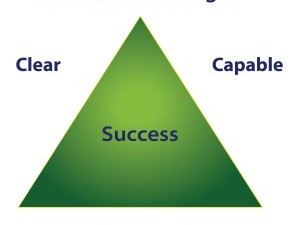
Differentiating what’s important to us from what’s urgent to others lets us take situational control by not confusing the two, and helps us to decide what to do next!
Sounds simple, doesn’t it? But take a look at your to-do list. And how are you doing on your bucket list? Do you find that you keep putting off things that you really, really want to do or must do? Do you catch yourself first doing things that feel more urgent but just for the moment?
Separating your Critical Few “must do” tasks from your Minor Many “nice to do” tasks is an essential step in the process and is my version of the 80/20 Rule. It’s a fact of life that applies across the board from business to your personal life—80% of your stress is caused by 20% of your problems. In network television, it’s the concept of “prime time”—the three hours of prime time produce 80% of the revenues despite being only 20% of the programming. In time allocation, the idea is for you to allocate 80% of your time to 20% of your tasks that deliver the greatest return on your effort. In other words, you shouldn’t just “work smart,” you should “work smart on the right things.”
So let’s say you’ve identified your Critical Few. When was the last time you had enough time for all of them? Prioritizing them is next. If you can’t get them all done, to which do you allocate your time first?
I don’t know the answer for you. But I do know a reliable method for arriving at the right conclusion. I call it the Given Reality Test.
“Given” because our Critical Few don’t appear in a vacuum. We develop them based on some givens – assumptions accepted as facts. There’s a due date we can’t change. We have role-based responsibilities that are inescapable. If your daughter is counting on seeing you on the sidelines of her soccer game, sending your assistant is no substitute. If you’re the corporate lawyer, you have to read the regs. If you’re the press liaison, you have to return that reporter’s call.
“Reality” because our wishes don’t govern our surroundings. Reality persists in defining what we can and cannot do. We might wish we could enact culture change overnight, but reality says otherwise. We wish our family commitments would not conflict with our work priorities, but often they do. We wish our strategy off-sites didn’t get interrupted by urgent calls from clients, but they usually do.
“Test” because testing means we don’t have to choose the wrong Critical Few and experience the bad effects before realizing we made a big mistake. We can put our toe in the water and then decide if we want to proceed.
Here’s how the Given Reality Test goes: First you define the problem clearly in your own mind. Then you articulate and calculate the effects of not doing each of the activities that is demanding your attention. When you analyze those effects, you’ll end up clear and committed as to what your priority should be. If circumstances change, you might have to repeat the Given Reality Test, but it still works.
That’s the process in the abstract, but let’s give it some color—some context so that you can apply it in your own circumstances. Let’s say you have three activities vying to be your Critical One for an afternoon. 1) Keep your promise to attend your best friend’s gallery exhibition. 2) Participate in an impromptu meeting called by your biggest distributor who is getting customer complaints about your products. 3) Try to get in and see your doctor about a worrisome pain you noticed earlier this week and haven’t had time to deal with.
- Define the problem: I can’t be three places at once. So I have to tolerate two of the following: keenly disappoint my best friend, push the distributor problem on to a colleague, stress out about that pain.
- Calculate the effects of not addressing each of them now: My 30-year friendship will not be altered by a single disappointment. This distributor wants to be heard and acknowledged, not fire us, and my colleague is a better listener and relationship builder than I. This will be my fourth sleepless night worrying about what that pain could portend—I’m too worried to enjoy the exhibition or even pay attention in the meeting.
So, there’s your answer, inescapably: Go see your doctor. It might be a different answer for somebody else, or different for you if the circumstances were slightly altered. But articulating the effects that way is its own revelation. It keeps you from ruminating in endless circles that all start out with “But maybe I should…” It lets you arrive at a conclusion that you can live with about how to allocate your afternoon.
Do this, and you will find yourself allocating your precious time better. You can claim your own time and reclaim the quality of your work, your productivity, and your sanity.
0 Comments
Leave a reply
You must be logged in to post a comment.





